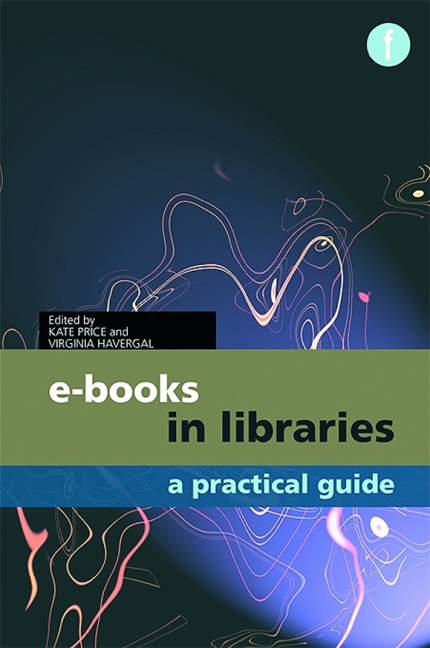Book contents
- Frontmatter
- Contents
- Preface
- The contributors
- Editors’ note
- Introduction
- Part 1 The production and distribution of e-books
- Part 2 Planning and developing an e-book collection
- Part 3 Delivering e-books to library users
- Part 4 Engaging readers with e-books
- Part 5 The future of e-books
- Part 6 Useful information
Part 1 - The production and distribution of e-books
Published online by Cambridge University Press: 08 June 2018
- Frontmatter
- Contents
- Preface
- The contributors
- Editors’ note
- Introduction
- Part 1 The production and distribution of e-books
- Part 2 Planning and developing an e-book collection
- Part 3 Delivering e-books to library users
- Part 4 Engaging readers with e-books
- Part 5 The future of e-books
- Part 6 Useful information
Summary
Overview
The development and availability of e-books for the library market have been growing in importance for the last ten years. The range of subject matter now available in e-book format is diverse, and includes textbooks at school, college and university level, self-help manuals, monographs and novels. Some e-books may have illustrations and charts embedded within the pages, whilst others may include interactive features and audio and/or video capability.
The most common distribution methods for e-books are payment and subsequent access through the website of the individual publisher or through third-party intermediaries; however, other methods of making this content available to readers can include consortium purchasing and hosting, in-house production and directing users to the many free e-books available. The authors contributing to this section consider the production and distribution of e-books from a number of perspectives.
Joel Claypool (Chapter 1) of Morgan & Claypool Publishers describes the process from the perspective of a book publisher, as well as highlight - ing some of the major challenges being faced by the industry in a world where so much factual information is now freely available via the internet.
Anna Grigson (Chapter 2) of Royal Holloway, University of London, provides some practical guidance for library and information professionals, addressing some of the factors to consider when selecting ebook providers, from identifying appropriate suppliers to negotiating licence terms.
Silvia Gstrein and Günter Mühlberger (Chapter 3) of the University of Innsbruck provide a fascinating insight into the eBooks on Demand (EOD) service, which allows readers to request digital versions of the print titles held in 30 member libraries. Gstrein and Mühlberger describe the process involved and consider the future for this impressive pan-European service.
Finally Kate Price (Chapter 4) of the University of Surrey discusses the role of free e-books in the library setting, reflecting on the advantages and disadvantages of managing a collection of freely available titles, and identifying some of the collections currently available.
- Type
- Chapter
- Information
- E-books in LibrariesA practical guide, pp. 1 - 2Publisher: FacetPrint publication year: 2011



